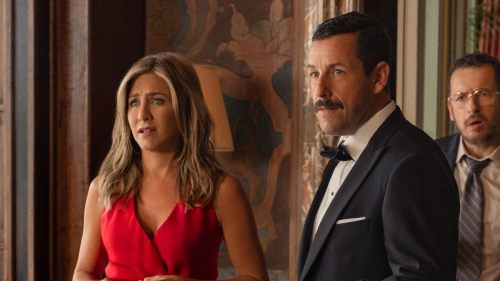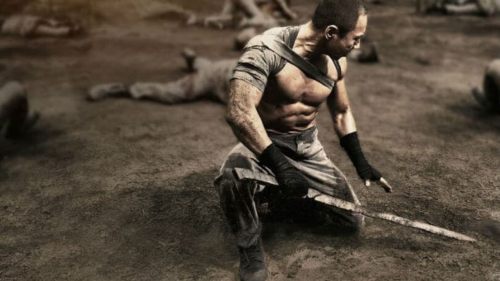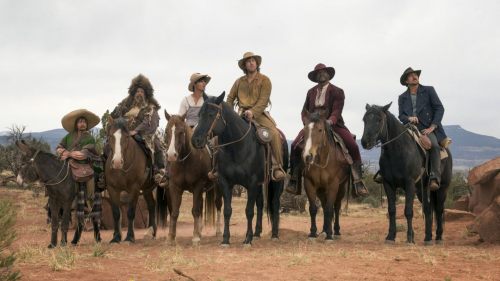“It’s On Netflix For Free”
I’m betting you are a Netflix subscriber. After all, it’s a pretty cheap way to watch content, and people love the all-you-can-eat buffet model. Almost singlehandedly because of Netflix, video is exploding. People are watching more than 160 hours of content each month, or 17 hours more than they did in Q1 2007, when Netflix first introduced their subscription streaming service [1]. Netflix can barely keep up with the consumer demand of binge-watching their favorite TV shows. You may still think of Netflix as something like your local video store – at least back before Netflix and primarily Redbox took them out like John Wick avenging a puppy. The truth is Netflix is much more like a broadcaster now. They’ve been buying TV content for years, and the TV content-creators are scrambling to feed both Netflix and, to a lesser degree, Amazon Prime. These platforms need subscribers for cash flow and the more that sign up, the more TV content Netflix needs to keep them occupied and happy.
Here’s where I turn into Chicken Little. This is a problem for indie film.
Let me start by explaining windows. There are three windows consumers utilize to watch movies: Theatrical, Home Video and Broadcast. First a film plays in movie theaters, then, four to six month later, it’s available on DVD. Then, another four to six months later, the movie would show up on broadcast, usually in a pay TV service like HBO or Showtime, and then later on cable channels that didn’t require a monthly fee.
These windows used to have rigid walls and no one thought about breaking down these walls until a little film called Bubble was released by Mark Cuban’s distribution company Magnolia. Cuban has always been an advocate of indie film and he helped Steven Soderbergh by producing a film that utilized non-professional actors. Bubble was an interesting experiment from one of our greatest living experimental directors. Embracing both the experimental aspect of the film and his rebellious nature, Cuban had the will and the ability to release Bubble in all three windows at the same time. He owned Landmark Cinemas (the largest independent theater chain in the United States), Magnolia (a growing distribution company that focused on festival acquisitions) and HDnet (a Pay TV channel). So Bubble came out January 27, 2006, with the DVD released a few days later on January 31. Unfortunately, Bubble turned out to be a minor work by a great filmmaker and while it garnered great press for its revolutionary distribution strategy, it wasn’t seen by very many people and has largely disappeared from consciousness.
Bubble failed, but Cuban still liked the idea of blurring the lines between windows. Magnolia soon worked on a strategy of releasing indie films on VOD platforms simultaneously with their theatrical releases, breaking down the wall between the first two windows. Major theater chains screamed bloody murder (there might be a post in the future as the fight between theaters and collapsed windows deserves attention, as well). This strategy worked incredibly well. After all, theatrical ticket sales were declining as folks were now getting televisions and receivers that could provide a bigger experience at home than what they previously had. Another indie distributor, IFC, who also owned theaters as well [2] as broadcast outlets, saw the potential in the VOD space as well and jumped in with two feet almost immediately after Bubble was announced with an entire line of VOD films – IFC First Take. In fact, they signed a rev share pact with Cuban’s Landmark in exchange for theatrical placement for the titles they wanted to release on VOD in a day and date model with theaters.
As DVD sales declined, Magnolia pushed the VOD model even further, working with cable platforms to move the home video window ahead of the theatrical window. This allowed even higher price points for VOD. This shift was extremely successful for both Magnolia and IFC so the number of titles they purchased each year grew and they were able to purchase higher demand titles for this model. Other distributors took notice and quickly followed suit. It became commonplace for major indie titles, that premiered at major indie film festivals, with an A-list cast, to be simultaneously available at home and in theaters.
The one window that maintained its place was broadcast. Yes, HBO would make documentaries that would just be utilized on their platform in the broadcast window, but those titles made up an extremely small percentage of the movies that came out each year. Enter Netflix streaming. Now you can certainly credit Netflix for being forward thinking. They had a DVD model that folks loved. After all, they basically bought every title that was released on DVD. They had no issues with shelf space that Blockbuster had to deal with. They could buy everything. While the average video store had around 8,000 to 12,000 titles and the really good video stores like Kim’s and Scarecrow had 50,000 titles or more, Netflix had more than 100,000 titles, and they saw their title breadth as a customer service initiative. Sure, they bought carefully so that title purchases would hopefully justify their cost, but they were primarily interested in subscriber growth. They wanted you to feel that whatever it was you wanted to watch, you could find it on Netflix.
However, Netflix forecasted both the decline in packaged media and the rise in their shipping costs. This would make their current model obsolete at some point, so why wait? Netflix built a service that could stream the same movies they rented on DVD, instantly, to anyone in the world. They began licensing content for their streaming service – and here’s the key: they licensed Pay TV rights for these movies. It was a new way of licensing digital content and it’s called SVOD, or subscription on demand (different from transactional video on demand – TVOD, or what used to be called pay per view). Since they were a subscription service dedicated to keeping the membership costs cheap so they could build their membership, they were satisfied to be the last stop for distribution. The problem was that most of the content in the broadcast window was tied up with decade long output deals with HBO, Showtime and Starz. Those platforms had deals with all the major studios. Netflix could only get small movies from small distributors, so they had a library of movies that wouldn’t be able to build a significant subscriber base.
Enter Starz. Starz had output deals with Sony and Disney and also foresaw the coming digital revolution. Starz tried and failed to launch their own digital platform (Vongo) that would allow their subscribers to watch their movies anywhere. But no one at the time really wanted to watch movies on their phone or laptop (the iPhone hadn’t come out yet) and their library was also pretty limited. So in October of 2008, Starz licensed their content to Netflix for about $30 million dollars [3], and the world began to essentially collapse.
Now that Netflix had some significant content, they were able to start to shift their subscribers over to their streaming platform. Their total subscribers grew from 9 million to more than 23 million in a very short amount of time. Starz realized too late they had created a monster and had devalued the content they paid billions for. By the time the Netflix deal ended and wasn’t renewed [4], Netflix had close to 30 million subscribers. They were able to license high demand content at prices higher than the other pay TV folks were paying, especially indie films that were really feeling the crunch due to declining DVD sales and declining ticket sales in theaters. They also quickly signed deals with new studios who were getting into the wide release theatrical space like Relativity and Open Road. They were happy to overpay for this content to secure new members. They also, in order to give their customers as many hours of content as possible, bought as many TV shows as they could. After all a movie is about two hours of content. A TV season can be more than 20. And the content creators actually saw a rise in viewership for their serialized content. For example, Disney saw viewership in LOST plateau after a few seasons. Netflix showed them data that their folks watched streaming content in large blocks (now known as “binge watching”) so they were seeking serialized TV content. They suggested they could actually build a new audience for LOST, so Disney licensed them the series at a nice chunk of change, and sure enough, viewership grew in the last few seasons, which brought in additional commercial sales, the lifeblood of their TV channel, ABC. Netflix can also take credit for building the audience for Breaking Bad, a great show that won tons of awards, but that no one watched and, because of that, AMC’s production partner Sony was going to bail after the second season. In a fact of delicious irony that no one knows about, AMC actually offered the show to Starz first in a second window if they would produce it. Starz dismissed the idea immediately and again helped Netflix, who was hungry for quality content.
So now, Netflix has a huge subscriber base, has a TV library of quality content, and enough capital to start entering into international territories so their base can grow even bigger. They can also now compete with Sony and HBO and acquire big studio content, which they did when (guess who) Starz declined to renew their pact with Disney as they were trying to follow HBO’s lead and build their own quality content. Unfortunately, Starz has only produced two shows that created any value – Spartacus, which was their highest rated show ever, and Party Down, which never had great ratings, but had a passionate following that’s grown bigger over time. Starz cancelled both shows before they ran their natural course.
After Starz and Disney ended negotiations in 2012, Netflix was happy to meet Disney’s asking price. Disney had already acquired Marvel, but landed the biggest fish of all in Lucasfilm shortly after licensing their content to Netflix. These two production companies, along with Pixar and Dreamworks, make Disney the most valuable studio to have their pay TV rights locked up. Their value for subscribers is probably worth more than Warner, Fox and Sony together.
By adding Disney and ramping up their own original content, Netflix is seeing their content acquisition budget sky rocket. The Walking Dead cost Netflix $1.35 million an episode. The Blacklist costs Netflix $2 million an episode [5]. The costs of their original shows are even bigger. Hemlock Grove and Orange is the New Black costs $4million an episode. House of Cards costs more than $4.5 million per episode [6].The Netflix series Marco Polo costs a staggering $9 million an episode [7]. Add in Disney which is estimated to cost around $200 million a year, and Netflix is spending around $9 billion on content, or 70% of total expenses [8].
All of these mean less dollars for licensing films outside of Netflix’s output deals. Since they can no longer buy everything, they really aren’t trying to have a broad mix of titles. In fact, they are probably more focused on an international view, which means a larger dependence on mainstream studio fare. They likely feel their pipeline from Radius, Magnolia and IFC (probably 50-100 titles a year) is enough representation of the indie space. The number of titles Netflix will be offering will likely decrease, especially if their US subscriber growth continues to slow down.
What’s even more concerning than providing fewer movies? There’s mounting evidence that Netflix might be hurting the entire entertainment ecosystem. This goes back to windowing. There used to be value in all three windows, but consumer household spending on nonlinear content (the home video window) is down 18% since its peak in 2006 [9]. The knee-jerk reaction to the layman would attribute this to the decline in DVD sales, but don’t forget the amount of time that people are spending watching content is increasing. A reasonable explanation is that folks are becoming more and more dependent on the third window, broadcast.
The problem with the growth of the third window via all-you-can-eat models is that it is devaluing the content. Since one doesn’t pay for each transaction, the consumer tricks themselves into thinking it’s “free.” Again, let’s go back to the beginning. There was a point in time where movies were exploited in all three windows and the further you were away from first exploitation, the less you had to pay to watch it. Now consumers are increasingly content to wait because of the value of waiting and the fact that the broadcast window has shrunk on indie movies even to the point where sometimes broadcast is the first exploitation which obliterates the other windows completely.
Other platforms have become aware of the effect Netflix is having. Redbox and Walmart have decreased or eliminated buys on content with a collapsed Netflix window. For example, House of Cards on DVD at Walmart has sold less than 10% of the total units sold. Walmart’s market share is usually 40% or 50% of similar titles. iN DEMAND, the VOD aggregator for most of the VOD marketplace, will only carry content with at least a 90 day window to Netflix. iTunes also sees a significant decline in transactions once a title hits Netflix.
Netflix is also becoming increasingly aggressive in acquiring content and either controlling the timing of all windows or keeping the product off the other windows. Granted, they pay more to control the timing and exploitation of other windows, but their acquisition of content limits the entire value of the content.
This means distributors are having more trouble making money on titles they invest hundreds of thousands, if not millions, of dollars in even if they get a significant license fee from Netflix. Couple this with Netflix overpaying upfront for content and several new aggressive distribution companies in the landscape (mostly prominently Broad Green Pictures who paid nearly $7 million dollars for two niche Terrence Malick films [10]), prices to acquire indie content have stayed the same, or gone up even if the value of the content has gone down. In short, distributors are paying the same or more for content that’s worth less than it used to be. If distributors are struggling with this new landscape, they will be paying less profit overages back to the producers and financers of the film, thus making it more difficult for them to make money off their investment. If financers lose money, they will be less likely to invest in film in the future.
Studios are also seeing a similar effect, even if they were slower to license content to Netflix than indies. However, the significant difference between studios and indies is studios have long ago been able to diversify themselves by producing television content. Whatever losses they face in the home are more than made up for by producing or licensing television shows to Netflix. So while studios, except for Disney, won’t license their theatrical product to Netflix in the first broadcast window, they now rely on Netflix. Indies don’t have that type of diversification and have all their eggs in the movie basket.
What’s the solution? For indie distributors, they must continue to keep a distance between the home video window and the broadcast window. For consumers of indie product, it’s increasingly important to transact in the first two windows as well as the broadcast window. I am not calling for people to cancel their Netflix account, and there are obviously economic factors in a sluggish economy in play, but it’s important to make an effort to see a movie in theaters, or rent it on VOD. Don’t want to buy DVDs anymore? Then it’s time to grow your digital library. Own the films you love and want to support. There are a few digital platforms like VHX who are trying to set themselves up as a legitimate alternative to Netflix by being DRM free and providing different ways of consuming the content they provide. Don’t want to watch a movie on your laptop? It’s now easy and cheaper to stream that content to your television with Apple TVs and Chromecasts. By supporting a film across all windows, you are doing your part to help independent filmmaking.
--
[1] If Video is Booming, Why are Revenues Evaporating? - Liam Boluk | Ivey Business Review
[2] Besides the IFC Center, IFC’s parent company used to be Cablevision, who owned around 40 Clearview theaters
[3] Compare that number to the $12 million Netflix just paid for one movie.
[4] Starz turned down a $300 million a year offer from Netflix, largely due to pressure from Disney and cable carriage providers
[5] Netflix acquires ‘The Blacklist’ for $2million an episode – Nellie Andreeva | Deadline
[6] Netflix TV Episodes cost $3.8m-$4.5m: CAA | Deadline
[7] How to Build an Empire, the Netflix Way – Emily Steel | The New York Times
[8] Why Growing Content Costs Are A Necessary Evil For Netflix |Forbes
[9] If Video is Booming, Why are Revenues Evaporating? - Liam Boluk | Ivey Business Review
[10] Broad Green Confirms Terrence Malick Deal Starting with ‘Knight of Cups’ – Mike Flemming Jr |Deadline



